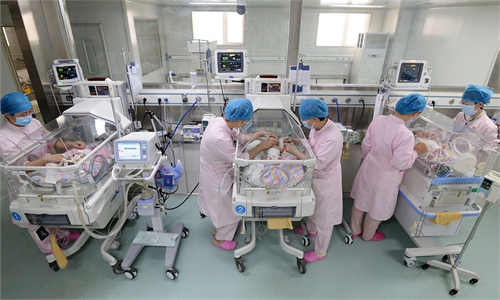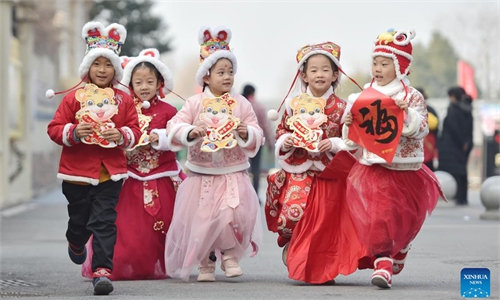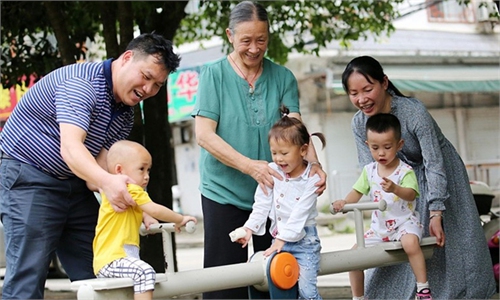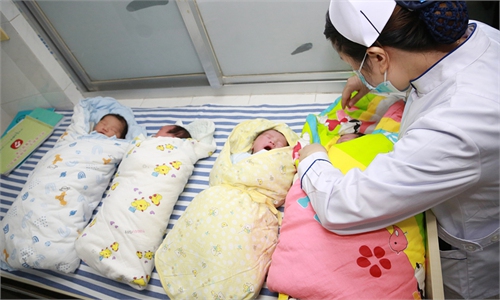Assisted reproductive technology expected to be financially covered by medical insurance in Chinese provinces to encourage childbirth
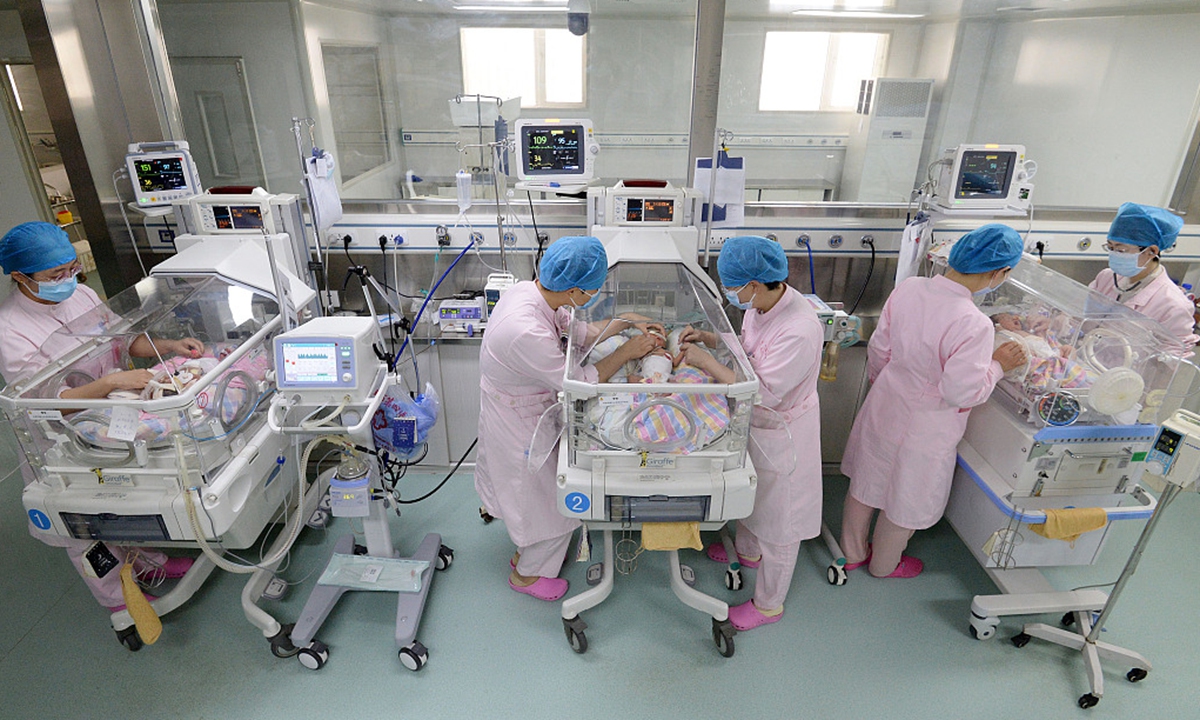
Third-child policy Photo:VCG
Assisted reproductive technology (ART) is expected to be included in multiple provinces’ medical insurance systems, as many provinces roll out supporting policies to encourage childbirth following the implementation of China’s third-child policy.
The latest draft on promoting prenatal and postnatal care by the Zhejiang Province Medical Insurance Bureau, which has been soliciting public opinions, noted that ART medical service fees, including artificial insemination (IUI) and In Vitro Fertilization (IVF) will be covered by maternity insurance in due course in accordance with related national laws and regulations.
With the rising number of infertile people in recent years, there have been growing calls for ART treatment fees to be included into medical insurance. IUI and IVF are the mostly widely used technologies of ART.
Beijing had earlier released a notice in February on the regulation and adjustment of the prices of medical services provided by public medical institutions. According to the notice, a total of 16 ART items, such as IUI, embryo transfer and sperm optimization, which are commonly used in outpatient treatment for infertility, will be among the new additions to the catalog of medications covered by the city’s medical insurance system.
However, the Beijing Municipal Medical Insurance Bureau said the inclusion of ART services in city’s medical insurance has been postponed.
Despite the postponement, the inclusion of ART services in medical insurance has been carried out in several other provinces.
The local medical insurance authority in Central China’s Hunan Province said on its official platform that it will gradually explore ways to include mature, safe, reliable and affordable therapeutic assisted reproductive technologies into the coverage of medical insurance payments.
Similar statements have also been made by the local health authority in Southwest China’s Sichuan Province in March in a bid to further reduce the burden on the related population.
On May 16, Xianning in Central China’s Hubei Province issued 12 measures to ensure the implementation of the third-child policy. According to the measures, local women aged 35 or above, who tend to be most in need of assisted reproductive technology, can be reimbursed for the infertility treatment they receive at the local medical institutions.
In addition to coverage of assisted reproductive technology services in medical insurance, Zhejiang also adjusted the reimbursement rate for some medical insurance as a way of promoting prenatal and postnatal care work.
According to the provincial medical insurance bureau’s draft, the proportion of medical insurance reimbursement for infants aged 6 and below will be increased by 10 percentage points compared with general urban residents.
Other medical treatment items such as analgesia in labor, ultrasonic screening of fetal structure in early pregnancy, and fetal system color Doppler ultrasonography will also be covered by the province’s maternity insurance.
Global Times
